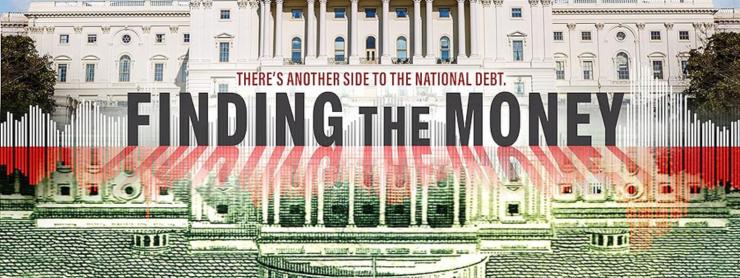Originally posted on January 12, 2015 at the New Economic Perspectives blog.
Tim Worstall has a post decrying the dangers of MMT ever being used in the real world—even as he recognizes or at least suggests that it might be the correct description of how the monetary system works—and is particularly concerned about Stephanie Kelton’s new appointment as Chief Economist on the Senate Budget Committee. (Note: Randy Wray also posted a critique of Mr. Worstall’s post today.)
Mr. Worstall’s main issue is one we’ve heard hundreds of times before—because MMT explains that currency-issuing governments operating under flexible exchange rates and without debt in a foreign currency do not actually have budget constraints, this opens the door to all sorts of problems if put into practice. We can’t trust our government with this information, in other words—it must be required to match spending with revenues over some period (whether each year, over the business cycle, etc.) or at least plan over some period of time to not allow the debt ratio to rise beyond a modest level.**
Mr. Worstall notes the frequently heard MMT argument that the point of taxes is to regulate the economy—and takes particular issue with the view that taxes can be increased/decreased in real time. Note, though, that this is simply a metaphorical or simplified explanation—it blends the Chartalist argument that “taxes drive money” with the functional finance view of using the outcomes of the government budget position as the criterion by which to judge it (rather than the state of the budget position itself). It is not intended as a literal point—no MMTer has ever made a specific proposal for raising/lowering income tax rates in real time to manage the economy. (Though Ray Fair does offer a sales tax proposal and shows that it would be stabilizing here—I simulated it along with the Job Guarantee and another transfer payment rule here.)
As argued bazillions of times, the real point MMT is making is that the government’s budget constraint is the wrong constraint—the correct constraint is whether or not a particular budget position will raise inflation beyond an official target rate (say, 2%, which seems to be the choice of most central bankers).
Let me explain to Mr. Worstall and others how this could work rather easily—just as the CBO and OMB now evaluate government budget proposals regarding their effects on the budget stance, the CBO and OMB could instead shift focus on evaluating these proposals against the inflation target (I argued the same thing here, printable version here). Much like how policy makers supposedly take estimates of effects on the budget position rather seriously in making budget conditions, they could replace these with projections of inflationary effects. An inflation constraint provides more fiscal space than a budget constraint, but in no way does it provide unlimited fiscal space (again, as we’ve always argued).
We could add quite a bit of detail here if we want, but I’ll just say a few more things. First, it’s quite clear that economists don’t have much expertise modeling how to use the government’s budget stance to manage the macroeconomy via a functional finance rule—but this is largely because they have come to view monetary policy as the main macroeconomic policy tool, not because it’s not possible.
Note, though, that functional finance isn’t less specific than, say, the Taylor Rule—Taylor’s Rule says to adjust the interest rate to manage the macroeconomy; functional finance says to manage the budget position to do this. Consider the never ending debate among policy makers at the Fed, Fed watchers, and economists on what the Fed should do next, when it should do it, how it should communicate what it’s going to do, and so on. If Taylor’s Rule were really that useful, we wouldn’t need most of this debate and there wouldn’t be so much disagreement among the various parties.
Second, concerns that government policymaking is necessarily less “efficient” than monetary policy are unpersuasive to me (even aside from my view that monetary policy traditionally understood as manipulations of the overnight rate isn’t a good idea). What if some of the thousands of economists currently working on understanding monetary policy started to try and understand how to build automatic stabilizers? They might help us understand which taxes (or tweaks to them, like indexing marginal tax rates to the inflation target rather than inflation) or spending priorities (or tweaks, like indexing spending to the target rate) are most consistent with functional finance—we don’t need to adjust tax rates in real time as much as build in a significant amount of stabilization automatically (i.e., more than we already have). MMT has its own proposal—the Job Guarantee—which we have argued in dozens if not hundreds of publications possesses macroeconomically significant stabilization properties if well designed.
For sure, times like the last several years may call for more than just automatic stabilizers (or it may instead call for better financial regulation to avoid a speculative bubble and then a deep recession in the first place). However, while I am under no illusions that we could ever get totally rid of some of the messy politics of fiscally-driven stabilization, it’s not as if monetary policy even when set by a small group of “experts” (like the FOMC) has been apolitical (and, as noted above, it’s been highly contentious among even the true believers in monetary policy which strategy is/was the appropriate one).
In sum, let’s stop pretending that replacing a budget constraint with an inflation constraint is so hard. It involves a change in perspective, nothing more and nothing less. It doesn’t give license to policy makers to do whatever they want. It does mean CBO will finally be doing something useful with its deficit projections—namely, building models to understand how deficits will affect the macroeconomy (while its current practice is to assume an economy at full employment and warn of impending financial ruin as a result of deficits). Stephanie’s appointment gives reason to hope at least a little that this change might actually one day be possible, for the benefit of all of us (including Mr. Worstall).
**The latter is actually what neoclassical economics argues—contrary to popular understanding, there are no economic theories that require the government to ever balance its budget. What they argue is that the government must eventually keep its debt ratio at a modest level, which does allow modest deficits on average forever. What this does require is primary surpluses (i.e., budget position before accounting for debt service) to offset primary deficits if the interest on the national debt is above the economy’s growth rate. In fact, though, this condition hasn’t been met on average in the post WWII period; only the 1979-2000 period saw average interest on the national debt rise above the economy’s growth rate.
18 RESPONSES TO “REPLACING THE BUDGET CONSTRAINT WITH AN INFLATION CONSTRAINT”
- Brian | January 12, 2015 at 6:43 pm |The inflation constraint, while logical and obviously correct, is scary to people because if they hear “So too much gov spending CAN be inflationary” then hear “we want more” they just lose their minds ha
Also it seems like, on the surface, “it’ll take care of itself” which can be a scary notion, the best way to sell inflation constraint I think is to use the “This leaves the size of deficit to the private sector” how that will determine the right size of deficit to meet needs and not be inflationary.I suppose you said it, a perspective change is needed. I hope this doesn’t need another, and worse, crash and recession… - Jonathan | January 12, 2015 at 7:56 pm |“no MMTer has ever made a specific proposal for raising/lowering income tax rates in real time to manage the economy.”Income taxes are not the best way to regulate the economy. The idea is to control aggregate demand, and the best way to do that is to tax spending itself, not income. I have seen in many MMT blog entries a proposal to do that, and to do it in real time.The tax is on all business gross receipts, and it would be the functional replacement of the corporate income tax. At a low rate, probably near 6%, such a tax could raise about the same revenue as the corporate income tax and the FICA tax combined. (There are lots of good reasons why eliminating FICA and /or the corporate income tax would be beneficial.)The management of the tax could be delegated to a board that operates similarly to the Federal Reserve Board. Instead of adjusting interest rates “in real time”, it would adjust the business gross receipts tax rate. Once per quarter is probably frequently enough, and adjustments of 1/10 of 1% are probably enough at one time. The “dual mandate” of unemployment and inflation would be their guide.With JG as the automatic stabilizer, the board would very likely converge the tax rate to something that would require very infrequent changes, absent large disruptions like the GFC.It’s not very difficult, either conceptually or operationally.
- Scott Fullwiler | January 13, 2015 at 8:54 am |Hi Jonathan,
Totally agree. That’s actually essentially what Fair simulates, and then I repeated. In Fair’s view, the tax rate could also be set by a rule that adjusts the rate to the state of the economy and inflation.Also, I’m still trying to figure out if I’m in favor of this, but the Fed could be given the authority to set “interest taxes” (or something like that) on loans. for instance, it could add a 2% tax to mortgages in San FRancisco in 2005, raising the monthly payment. (Of course, would need to get rid of many of the lending products that were intended to get around prevailing interest rates during that period.) That would be far better than to try to manage the economy through an overnight rate since it would go directly to the spending/borrowing that needs to be scaled down. I also see shortcomings and potential problems with this, but it’s a thought and it’s along the lines of an adjusting tax on spending.- geerussell | January 13, 2015 at 6:33 pm |Scott,Here’s an interesting footnote of policy recommendation for real time tax adjustments. From the Economic Report of the President, 1969. Page 83:
…the experience of the 1960’s, including the costly delays in the passage of the 1964 tax cut and the 1968 tax surcharge, suggests the desirability of some other standby arrangement for obtaining prompt adjustments in tax rates to achieve fiscal policy objectives in case of a delay in reaching a decision through normal Congressional procedures. […]A more permanent arrangement to provide the desired flexibility could take various forms, including:1. Presidential discretion to propose temporary changes in personal income tax rates within certain specified limits–such as 5 percent in either direction–subject to veto by the Congress within (say) 30 days. This year’s Budget Message contains such a proposal.2. A streamlined Congressional procedure for ensuring a prompt vote on Presidential proposals for changes in tax rates within certain specified limits. […] A structural review of rates would be especially appropriate if rates should drift downward (or upward) consistently for a period of several years as a result of fiscal adjustments. It is important, however, that the issues of tax reform be treated and considered separately from the annual tax decisions related to fiscal policy.
I’ll just add that the report overall expresses a focus on employment as the driving priority and a level of apparent sanity about fiscal policy that makes me wonder what the heck happened to all those economists heading into the 70s…
- geerussell | January 13, 2015 at 6:33 pm |Scott,Here’s an interesting footnote of policy recommendation for real time tax adjustments. From the Economic Report of the President, 1969. Page 83:
- Scott Fullwiler | January 13, 2015 at 8:54 am |Hi Jonathan,
- Kyle | January 12, 2015 at 11:55 pm |It also appears, to me, that monetary stimulus, via lower interest rates and oligopolistic pricing have been more responsible for inflationary episodes. The stock market bubble of the 1920’s and the oil price shocks of the 1970’s come to mind.Worstall also mentioned “Just as the old complaint about central banking goes (“the central banker’s job is to remove the punch bowl just as the party gets going” by raising interest rates) a budget surplus is the fiscal equivalent, just part of moderating both the booms and busts to which capitalism is prone.”Again, another aspect of monetary policy blowing bubbles and their later collapse.He says too, “That standard monetary theory then also says that doing too much of this (in more detail, printing or creating lots of base money, rather than the creation of credit in the manner that the banking system does) will be highly inflationary.”One could easily wonder whether Mr. Worstall owns a bank given his insistence that government emitting money as debt is preferable to a debt free fiscal infusion.
- Neil Wilson | January 13, 2015 at 12:42 am |Ultimately the politicians are in charge and put there by us as elected representatives.So when politicians spend like drunken sailors and make a mess of things then we can kick them out at the next election and replace them with ‘the other lot’.When bankers spend like drunken sailors and make a mess of things we can’t get rid of them. As we have seen.So it’s really a question of picking your poison. Democratic politicians or Banker Barons.
- Mitch Shapiro | January 13, 2015 at 9:53 am |Neil’s last sentence, “So it’s really a question of picking your poison. Democratic politicians or Banker Barons” raises a key point. A point that seems to relate more to politics than economics–as does Worstall’s column, which, in essence, is a confession that he trusts the Banker Barons more than our democracy. That’s a revealing confession, and one that suggests pretty clear lines of political engagement.I see Worstall’s column (and Stephanie’s appointment) as an indicator that MMT’s influence is moving into a new phase, where folks like Worstall are basically saying, “yeah, you’re right about the economics, but I trust the Banker Barons more than democratically elected politicians.” At least he’s relatively honest, if not fully explicit, about his motivations, which takes the debate about MMT in a somewhat different and more political direction.In my mind, this new phase in the MMT-related debate relates to J.D. Alt’s recent post about “dynamic” vs. “static” scoring of public investments, and Joe Firestone’s post explaining how the Interactive Voter Choice System (IVCS) can help make our system of democracy work more effectively to support citizens in making collective decisions about how to live together (and with our natural environment) in a relatively peaceful, free, fair, healthy and prosperous society.Taken together, what these posts (and comments like Neil’s) point to is a political reform movement that advocates political and governmental systems and public policies that build on the economic insights and “expanded policy space” provided by MMT.These include 1) well-developed dynamic scoring of public spending/investment per J.D.’s post, to help policymakers evaluate and compare policy and spending options; 2) a mix of well-designed automatic stabilizers (including a JG program) as described in this and other NEP threads, MMT papers, etc; 3) democracy-enhancing systems like IVCS, which helps ensure that our governmental systems and policies reflect “the will of the people” rather than of the “banker barons” and other .01%ers, and; 4) the kind of regulatory and enforcement policies and mechanisms that folks like Bill Black have been passionately and eloquantly advocating for years.So, perhaps we should be thanking Worstall for helping the debate about MMT move into this new phase. And perhaps we should also follow the lead of these recent NEP posts and focus increasingly on working with progressive policy advocates to develop a politically compelling policy agenda that builds on the economic foundation provided by MMT and the “expanded policy space” it provides for a society operating with a democratic political system and a sovereign currency.
- Joe Firestone | January 13, 2015 at 10:09 am |Very nice synthesis, Mitch! thanks!
- Joe Firestone | January 13, 2015 at 10:09 am |Very nice synthesis, Mitch! thanks!
- Mitch Shapiro | January 13, 2015 at 9:53 am |Neil’s last sentence, “So it’s really a question of picking your poison. Democratic politicians or Banker Barons” raises a key point. A point that seems to relate more to politics than economics–as does Worstall’s column, which, in essence, is a confession that he trusts the Banker Barons more than our democracy. That’s a revealing confession, and one that suggests pretty clear lines of political engagement.I see Worstall’s column (and Stephanie’s appointment) as an indicator that MMT’s influence is moving into a new phase, where folks like Worstall are basically saying, “yeah, you’re right about the economics, but I trust the Banker Barons more than democratically elected politicians.” At least he’s relatively honest, if not fully explicit, about his motivations, which takes the debate about MMT in a somewhat different and more political direction.In my mind, this new phase in the MMT-related debate relates to J.D. Alt’s recent post about “dynamic” vs. “static” scoring of public investments, and Joe Firestone’s post explaining how the Interactive Voter Choice System (IVCS) can help make our system of democracy work more effectively to support citizens in making collective decisions about how to live together (and with our natural environment) in a relatively peaceful, free, fair, healthy and prosperous society.Taken together, what these posts (and comments like Neil’s) point to is a political reform movement that advocates political and governmental systems and public policies that build on the economic insights and “expanded policy space” provided by MMT.These include 1) well-developed dynamic scoring of public spending/investment per J.D.’s post, to help policymakers evaluate and compare policy and spending options; 2) a mix of well-designed automatic stabilizers (including a JG program) as described in this and other NEP threads, MMT papers, etc; 3) democracy-enhancing systems like IVCS, which helps ensure that our governmental systems and policies reflect “the will of the people” rather than of the “banker barons” and other .01%ers, and; 4) the kind of regulatory and enforcement policies and mechanisms that folks like Bill Black have been passionately and eloquantly advocating for years.So, perhaps we should be thanking Worstall for helping the debate about MMT move into this new phase. And perhaps we should also follow the lead of these recent NEP posts and focus increasingly on working with progressive policy advocates to develop a politically compelling policy agenda that builds on the economic foundation provided by MMT and the “expanded policy space” it provides for a society operating with a democratic political system and a sovereign currency.
- Neil Wilson | January 13, 2015 at 12:53 am |The job guarantee and progressive taxation handles the cyclical part. Dynamic management should all be in the auto stabilisers – which as we have seen have been the things taking the strain over the last seven or eight years now anyway.All government needs to do then is set the thermostat on the economy so that allowed activity + discretionary spending + boom time – auto-stabilisers doesn’t overspend the economy.And with the Job Guarantee in place you do that by slightly underspending the economy and keeping the banks on a tight leash. Possibly you may have to shorten budget cycles to six months in a modern economy.I don’t think you need to change tax rates once you have a JG in place. Once you realise that ‘inflation’ is about over bidding the economy you just pull back on the overbidding. There are lots of places where you could do this. You could enforce delays in the planning system for example which would stop the private sector building things, which frees up space for public building.Once you get to thinking in real terms about resource utilisation then you realise there are lots of levers out there. Not just the Holy Power of Taxation.
- Senexx | January 13, 2015 at 3:55 am |Jonathan – can you at least please link to a source?It sounds like you are arguing for a consumption tax?
- Jonathan | January 13, 2015 at 12:57 pm |Google “golfer1john business gross receipts tax”Yes, it’s basically a consumption tax. But not VAT. VAT is ugly and complicated and high rate. High tax rates cause distortion of behavior. Taxes should be low rate, simple to understand, calculate and collect, and difficult to evade.
- Jonathan | January 13, 2015 at 12:57 pm |Google “golfer1john business gross receipts tax”Yes, it’s basically a consumption tax. But not VAT. VAT is ugly and complicated and high rate. High tax rates cause distortion of behavior. Taxes should be low rate, simple to understand, calculate and collect, and difficult to evade.
- Bob Gorman | January 13, 2015 at 6:23 am |The neoliberal strategy is always to simplify, isolate, take out of context, divide, et al to make it more difficult to mount a complete rebuttal to its proponents arguments. In Mr. Worstall’s case, he uses the emotionally loaded term “printing money”, which as long as I have been following MMT, is the quickest way to sow fear, uncertain, and doubt in their base about MMT.I think Scott’s perspective of an inflation constraint is great proposition from the MMT position to manage the macro economy as well as the JG/ELR for stimulating it. Those proportions may be simple enough to break a few of the brain-stem-only thinkers away from the neoliberal public relations machine that is so well entrenched in our public and political discourse.
- Danny A | January 13, 2015 at 9:41 am |Ok, so how to measure “inflation”? It’s not that simple!
There is debate in the UK over which is best; RPI, CPI, CPIH, with additional demands from the EU. Would not want vested interests to manipulate an inflation metric, so we’d ideally need an objective measure perhaps some international standard..? - entreposto | January 13, 2015 at 10:44 am |Here’s a quote from the Forbes article:
“Because there’s no constraint upon how large government can be if we’re financing it just by printing the money for it to spend.”I wonder, does the author really believe that the constraint on the size of the federal gov’t is budgetary? Does that even match reality? Well, there truly are limited real resources at any particular point in time, but what determines how those are used? Some arbitrary number? Or is it that the resultant budget is merely an artifact of the chosen system of gov’t and its policies? In that case, the constraint on the size of gov’t is public opinion, and where public opinion goes, the budget will follow.- entreposto | January 13, 2015 at 10:51 am |Well, his last paragraph does point out that that author understands that the real constraint on gov’t is his (ie. the public’s) willingness to do the bidding of gov’t.
- entreposto | January 13, 2015 at 10:51 am |Well, his last paragraph does point out that that author understands that the real constraint on gov’t is his (ie. the public’s) willingness to do the bidding of gov’t.
- Bob Salsa | January 13, 2015 at 11:37 am |I’ve been walking around talking about this as an idea for implementing MMT in national policy. I left such a comment on Worstall I am elated and relieved to find someone more skilled and articulate has been doing this long before.I see the FED as the better arbitrator of whether the chosen inflation benchmark is at risk of being breached; the recent shenanigans of moving the CBO to dynamic scoring confirms that belief.For political viability, I see the dollar-for-dollar of matching tax cuts to increase spending – I refer to it as the “grand bargain.” It gives both sides the needed fields to grandstand and collect their campaign funds – quickly forgetting the new paradigm of having the deficit consideration automated and in the hands of technocrats.The grandstanding would have to come to an end at some point, otherwise an across the board of tax cuts equal to increase spending automatically kicks in for the fiscal year to come. If we’re stuck with a majority of non-thinkers in the Congress, why burden them at all? 😉
- Bob Salsa | January 13, 2015 at 11:49 am |If the only issue is how to measure inflation, we have arrived. Make it a range to cover the nuances and then let the FED board make their call – that’s why they’re paid the big bucks. Whatever the measure, it will result in substantially more govt spending than present and get this economy moving again for everyone. The constant howls from the inflationisties will provide more that enough pressure to keep it reasonable.Making this something akin to rocket science in the political sphere will kill it – keep it simple. The “rocket science” will have to be there in academia, the think tanks and hopefully some Congressional staff – called upon at appropriate times to stroke their beards and give the thumbs up in the newspapers, with cable news talking heads and on CSPAN.





